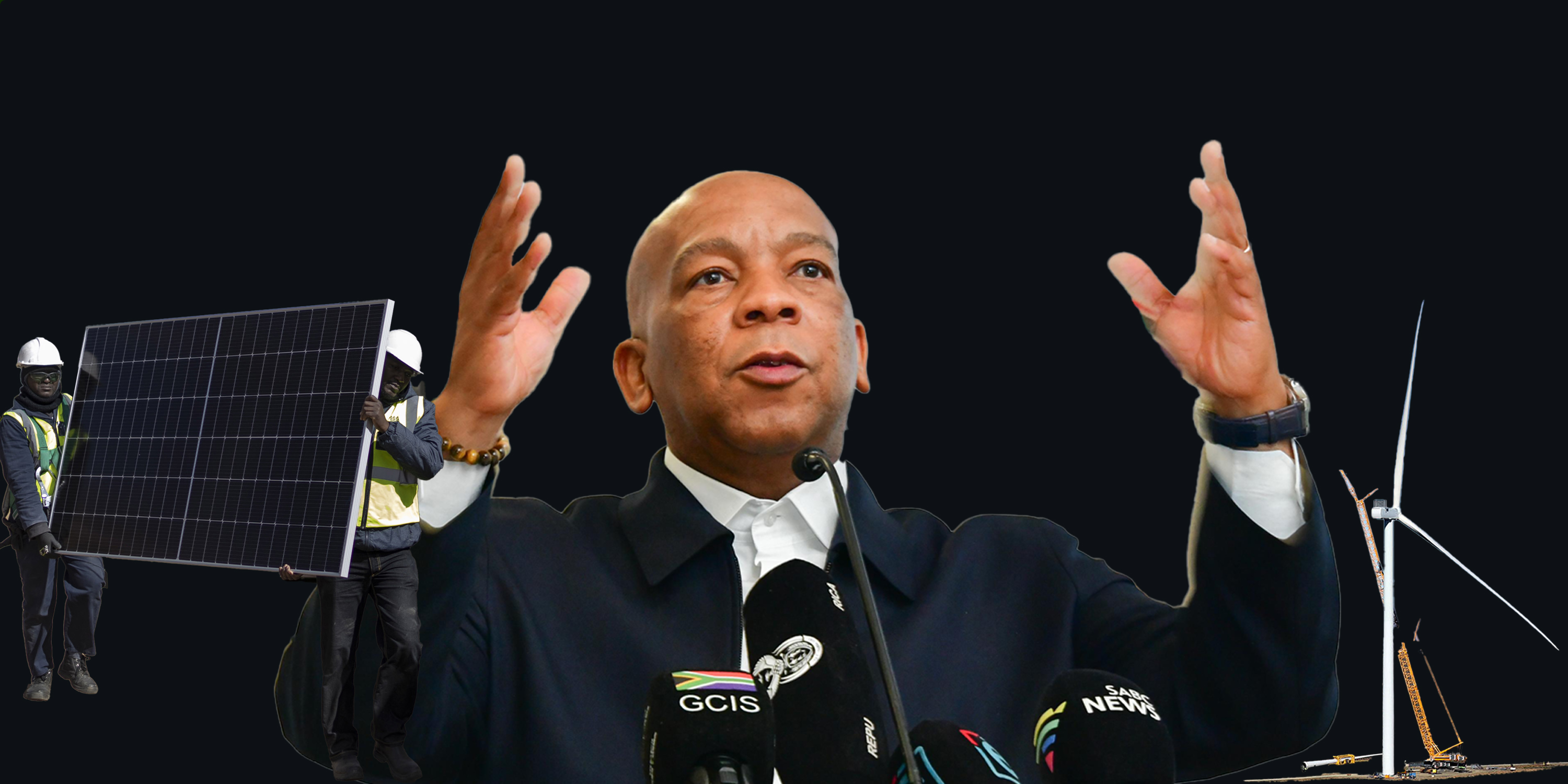Electricity and Energy Minister Kgosientsho Ramokgopa said his department would “de-risk energy generation” in South Africa and argued that falling wind and solar generation costs, coupled with Eskom’s reduced diesel usage, should lead to more modest tariff hike requests from the utility.
Ramokgopa was briefing the media on updates to the Independent Power Producer (IPP) Programme on Monday, 21 October 2024.
“This media briefing signals a significant moment because now we’re pivoting away from just focusing on the performance of the grid that is largely Eskom.”
Their focus would move to broader matters of energy security and sovereignty, and – according to the minister – relate to obtaining the “optimal mix” of fuel sources that “power the South African economy”.
The briefing was also to “illustrate to the country that we’re doing everything possible to ensure that we’re able to exploit the reforms on the generation side as birthed by the amendment in relation to the Electricity Regulation Act and also to illustrate that we’re doing everything possible to ensure that we’re able to achieve our Nationally Determined Contributions (NDCs).”
NDCs are climate action plans submitted by countries under the Paris Agreement outlining each country’s goals for reducing greenhouse gas emissions, adapting to climate impacts and contributing to global efforts to limit the global average temperature increase to well below 2°C.
The International Energy Agency (IEA) has previously shown that the energy sector globally is responsible for nearly two-thirds of all anthropogenic greenhouse gas emissions mainly by burning fossil fuel. Reducing fossil fuel usage rapidly is one of the most straightforward ways to avoid the worst, irreversible impacts of dangerous climate change.
Read more: How climate change will impact us through our lifetime: Part One (maternity and newborns)
The IPP programme is one of the tools the South African government has used to slowly reduce the carbon intensity of its generation system and economy more broadly.
“It’s important that we continue to give that assurance, not just to the international community, but most importantly to the South African citizens that we do have an appreciation that the issues of climate change and its relationship to greenhouse gas emission is something that has been established by a rich body of science,” said the minister on Monday.
“It is our collective responsibility to ensure that we are able to transition and reduce the greenhouse gas emissions and for us to be able to achieve this, we need to accelerate the onboarding of renewables as part of the aggregate mix.”
Aim to end load shedding
Touching on the recent successes in taming load shedding, Ramokgopa said that there should not be a celebration or counting of the number of days without load shedding “because the expectation is that there shouldn’t be load shedding. There must be consistency of supply.”
He shared some of the recent data. The unplanned capacity loss factor – a measure of the percentage of power generation capacity lost due to unexpected breakdowns or outages at power plants which reduces the total available electricity supply – is down to 25.5% compared with 33.79% at the same time last year.
Read more: Here’s the data showing how Eskom can keep SA’s lights on
“We are pivoting,” he said, continuing that “it’s not about the number of days without the load shedding, but it’s what are the additional interventions we’re making to ensure that load shedding won’t come back and also ensure that we’re able to attain energy security as we green electricity generation in the country.”
Reiterating his call for the cessation of load shedding not to be celebrated as an achievement, the minister said having “absolutely no load shedding” would be an achievement especially if Eskom could use “cheaper forms of electricity generation” to keep the lights on.
“And that’s where the independent power producer programme comes in,” he remarked adding that during this seventh administration, “the energy and electricity department is going to accelerate this procurement programme.” He said the department would in the next four to five weeks introduce reforms and improvements to enable this touted acceleration.
“So we are going to de-risk energy generation just from a monopoly that is Eskom and then we’re able to have multiple generators of electricity in the country.”
Diesel’s effect on tariffs
Costly diesel usage is also down.
“Compared to the same period last year…period starting 1st of April to the 17th of October, we had spent about R18-billion on diesel just to keep the lights on,” the minister said.
“If you had to compare it with the period this year…that [this year’s] number is about R12-billion less than what we had attained last year, so it’s a significant shift,” said the minister.
“And in fact, we are sustaining it at 66% below what was [used during] the same period last year. So … there’s a structural shift. What … I mean by structural shift is that there’s less and less reliance on diesel and if you look at the load factor – the percentage of time that we’re relying on diesel – for the same period last year, we’re sitting at about 8.95% and this year we’re sitting at about 4.59%.”
Ramokgopa shared his belief that these improvements and “improvement in the health of Eskom” were “going to be passed on to the end consumer”.
“Remember that … the tariff structure is also a function of your fuel sources so if there’s less and less reliance on diesel it means that Eskom will make lesser tariff applications to Nersa because they’re becoming more and more efficient.”
In June, Business Maverick reported that Eskom planned to apply for an increase of up to 44% in the electricity tariffs it charged customers, and if the power utility had its way, the increase could be implemented as early as April 2025. DM





